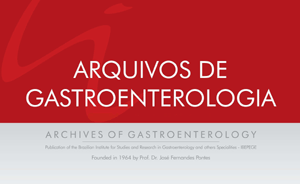ABSTRACT
BACKGROUND:
Helicobacter pylori infection in Chile remains as a public and private health-care system’s challenge, with a prevalence of the infection over 70%. Nowadays, antibiotic treatment of the infection is mandatory to prevent the arising of severe associated diseases but failures in the eradication therapy mainly due to clarithromycin resistance has been observed worldwide and first line eradication therapy seems to be not effective anymore in several geographical areas. Thus, health-care systems are committed to maintain an epidemiological surveillance upon the evolution of the antibiotic resistance of this priority 2 pathogen.
OBJECTIVE:
This work reports a 10 years surveillance of the primary antibiotic resistance of H. pylori clinical isolates at the Biobío region-Chile, and the evolution of resistance toward amoxicillin, clarithromycin, levofloxacin, metronidazole, and tetracycline among the species.
METHODS:
H. pylori strains were investigated during the periods 2005-2007 (1435 patients analysed) and 2015-2017 (220 patients analysed) by inoculating a saline homogenate biopsy onto the surface of Columbia agar (Oxoid, Basingstoke, UK) - supplemented with 7% horse red blood cells plus DENT inhibitor (Oxoid, Basingstoke, UK) - following by incubation at 37ºC under 10% CO2 atmosphere for five days. Antibiotic resistance pattern of the isolates was assessed using the disk diffusion test in Müeller-Hinton agar supplemented with 7% horse red blood cells followed by incubation for further three days under 10% CO2 atmosphere. Statistical analysis was done using the SPSS v22 software and P values <0.05 were considered statistically significant.
RESULTS:
A total of 41% of 1435 patients were detected to be infected with H. pylori by bacteriological culture in 2005-2007 period, meanwhile 32.7% from 220 patients were also infected in 2015-2017 period. The clinical isolates of H. pylori are mostly susceptible to amoxicillin and tetracycline (both over 98% of strains), but less susceptible to levofloxacin in both periods analysed (over 79% of the strains). On the other hand, metronidazole continuous showing the highest score of resistant isolates (over 40% of resistant strains), although an 18% fewer resistant strains were observed in 2015-2017 period. Clarithromycin, the key antibiotic in eradication therapies, has an increased frequency of resistant strain isolated in the decade (22.5% in 2005-2007 and 29.2% in 2015-2017). Multidrug resistant strains (two, three and four antibiotics) were also detected in both periods with the highest scores for simultaneous resistance to clarithromycin-metronidazole (18%) and clarithromycin-metronidazole-levofloxacin (12.5%) resistant strains. According to gender, the isolates resistant to amoxicillin, clarithromycin and metronidazole were more frequent in female, with a specific increment in amoxicillin and clarithromycin resistance.
CONCLUSION:
The frequency of clarithromycin resistance (29.2%) detected in 2015-2017 suggests that conventional triple therapy is no longer effective in this region.
HEADINGS:
Helicobacter pylori, drug effects; Helicobacter infections; Anti-bacterial agentes; Bacterial drug resistance; Clarithromycin; Men; Women; Chile
